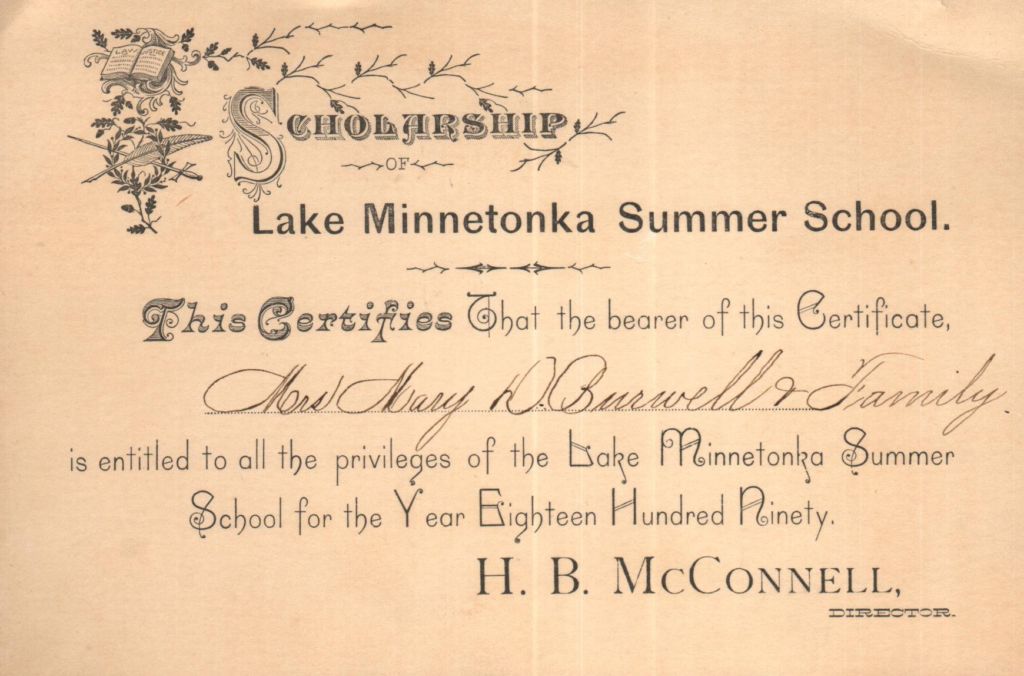May 15, 2018
The Museum’s archives are filled with a treasure trove of interesting items from Hennepin County’s past, including this student card for the Lake Minnetonka Summer School. Students at the school enjoyed the opportunity to indulge in four weeks of academic lectures on a wide range of topics, all while enjoying summer on the scenic shores of Lake Minnetonka.
The Excelsior-based Lake Minnetonka Summer School ran for four weeks in mid-summer. Professors from Minnesota and beyond served as instructors. In 1890, the school drew students – primarily teachers themselves – from seven different states, and its staff proclaimed it the largest of its kind in the nation! Its aims were “to furnish opportunities to teachers and others for advancement in language, literature, science, art, and the methods of teaching.”
This student card was issued in 1890 to Mrs. Mary Burwell and family. Mary Durham Burwell was married to Charles Burwell, former manager of the Minnetonka Mills Company. In 1890, Mary had two young children, Louise (age 8) and Loring (age 6); Louise and Loring would have been too young to enjoy the Lake Minnetonka Summer School, but Mary’s older step-children, Ann Marie (age 22) and George (age 17) may have joined her in Excelsior. The Burwell home still stands today and is open to the public for tours and special events. More information about the Burwells can be found in the Hennepin History Museum archives or at the Minnetonka Historical Society.
“The school was a great success this season. The attendance was extremely large, every room being full. The branches of study were of the highest and the teachers were of the best.” – Minneapolis Sunday Tribune, August 3, 1890
The season was capped off with a school-sponsored musical and literary event featuring a 100-voice chorus and a literary program designed by Professor Maria Sanford, noted University of Minnesota professor.
Despite its initial popularity – more than 150 people attended in 1890! – the school only lasted five seasons. Summer schools for teachers had expanded rapidly in Minnesota and across the upper Midwest, and students no longer had to travel to obtain access to educational enrichment opportunities.

